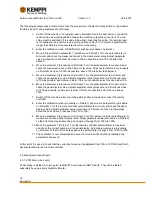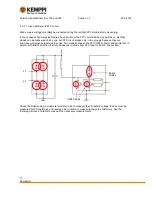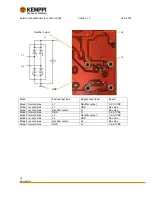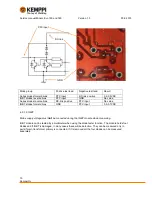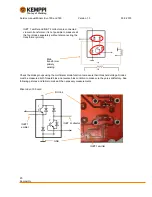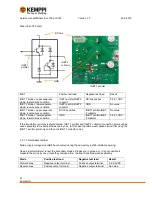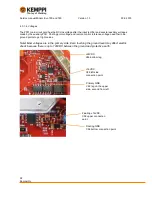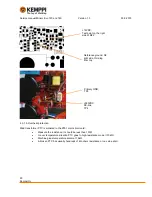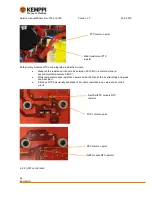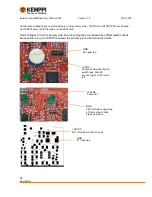
Service manual Minarc Evo 150 and 180
Version 1.3
30.9.2015
10
Kemppi Oy
3.4. Description of operation
Minarc Evo 150/180 can be divided to two parts: Z001 main circuit card and A001 control/panel card
Z001 main circuit card
o
Input rectifier and PFC circuit
o
IGBT module
o
Main transformer
o
Secondary rectifier
o
Secondary choke
o
Auxiliary switching power supplies
o
Current measuring
A001 control card
o
Inverter control
o
Panel display
o
Current set value adjustment
o
Panel buttons functions
o
Panel LEDs
o
Remote control functions
3.4.1. Z001 Main circuit card
Main circuit card; coil components and their functions:
Main transformer turn ratio is 4:1; its primary winding is 20 turns (wire) and secondary
5 (foil). Transformer has 140/170°C PTC for over heat protection. While temperature
rises the resistance stays under the 100
Ω until the breakdown point (140°C), then the
PTC goes to high-
resistance mode (>10kΩ). Control logic stops inverter when the
resistance value rises over the 1,5
kΩ.
Secondary choke L3 inductance is 5
μH and its winding has13 turns. Choke slows the
secondary voltage changes and works as energy storage in the long short circuits.
PFC choke works together with PFC circuit. It has 66 turns.
Main circuit card itself provides the following functions:
DC-link soft start charging and over voltage protection circuit. It avoids full power
connection if the primary has a short circuit or main supply voltage rises over the
safety limit.
EMC filtering circuit filters EMC disturbances from main supply voltage to machine
and vice versa.
The single-phase rectifier/PFC module rectifies the mains voltage (nominal 230VAC)
to PFC circuit, approx. nominal value of 320VDC. Rectifier holds four power diodes.
PFC circuit is integrated in the same module with rectifier diodes. PFC circuit (two
parallel IGBTs, two diodes in series and PFC choke) keeps the primary voltage and
current in the same phase. This rises the power factor up to 0,99. PFC is boost type
and raises the DC-link voltage up to 390VDC.
Power section is based on dual forward architecture with 63 kHz switching frequency.
It has two stages: ON and OFF/demagnetizing. OFF-stage must last longer time than
ON-stage because main transformer needs to be demagnetized. Otherwise it goes to
saturation.


















